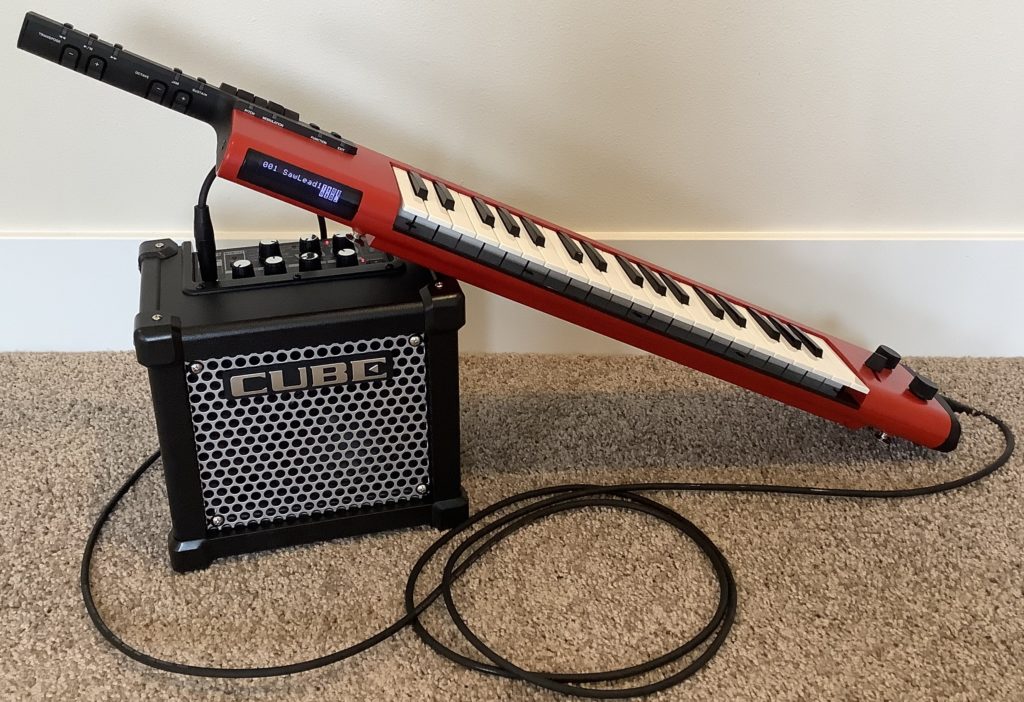A quick project while booting Windows…
The speaker in the Roland Micro Cube GX is just OK and I think I can do better. Roland specs claim 5 inches (12cm), but folks have tried 5 inch replacement speakers and have found the speaker hole to be too small.
Remove four screws and the grill. Watch out for the sharp edges on the back of the metal grill! The speaker itself is attached by four additional screws. The diagonal distance from screw to screw is about 4 7/8″ inches (12.5cm), give or take. The screw to screw distance along the “square” sides is about 3 3/8″ (8.5cm). The cone diameter is 4 1/4″ (11cm).
I think Roland are being optimistic here. Turns out, there’s nothing in the way of a speaker size standard. Some vendors measure the diagonal distance between screws; some measure the outer frame diameter. Yikes, you get the picture.
The most important measurement here is the cutout diameter, AKA, the speaker hole.
Remove four more screws and gently pull the speaker out. The speaker wires are relatively short, so don’t get too aggressive. The speaker lugs use spade connectors: the red wire needs a 1/4″ lug and the black wire needs a 1/8″ lug. Keep this in mind when going to the hardware store.
The cutout diameter is 4″ (10.4cm). If you bought a 5″ speaker, I can see why it didn’t fit the cutout hole. Argh! Don’t worry about mounting depth in this case — there’s plenty of room. I think I’ll buy a speaker to fit the 4″ cutout and drill new speaker mounting holes, if necessary. Increasing the size of the cutout sounds like a bear.
BTW, the Roland part number is W120FP70-00C. The speaker impedance is 4 ohms.
Taking a quick look through Parts Express, here are some candidates:
- Dayton Audio CF120-4 4.5″ woven carbon fiber midwoofer, 4 ohms
- Dayton Audio PC105-4 4″ full-range poly cone driver, 4 ohms
- Eminence Alpha 4-4 4″ full range, 4 ohms (pair)
- PRV Audio 4MR60-4 4″ midrange speaker, 4 ohms
I’m looking for cutout size, decent frequency response, and reasonable cost. Why put a $100 speaker in a $120 combo amp? I favor woven fiberglass over paper and suggested use in PA line arrays. Hole alignment doesn’t matter that much. I can always drill new pilot holes.
Just in case you need to know, all of the electronics are on a single printed circuit board just below the top panel. The controls are mounted directly on the PCB (low cost). There are leads from the PCB to the speaker and the battery compartment. Lead length is trimmed quite short and there isn’t much play during disassembly.
Copyright © 2022 Paul J. Drongowski

